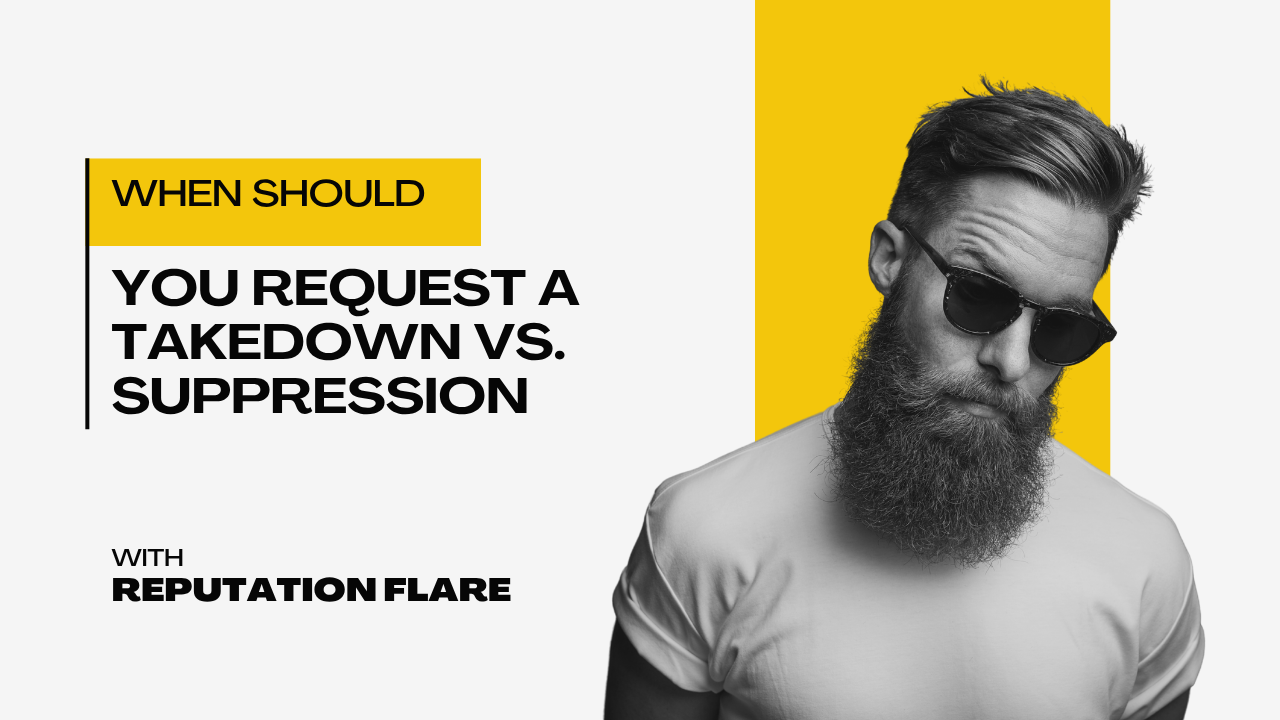Not all bad press needs to be deleted. And not all content can be removed.
When negative news shows up on Google, you’ve got two real options—request a takedown or suppress it. Which one works best depends on the situation, the content, and your long-term goals.
Here’s how to decide when to push for a takedown and when to focus on suppression instead.
Learn More: How to Remove a News Article from Google
What’s a Takedown?
A takedown means removing the article from the internet entirely. This can be done by:
- Asking the publisher to delete the article
- Requesting de-indexing (removal from search engines)
- Filing a legal removal request with Google or the courts
When a Takedown Makes Sense:
- The article contains false, defamatory, or misleading info
- It includes private or sensitive data (like medical records or doxxing)
- You’ve been cleared of wrongdoing, but the article hasn’t been updated
- It targets a minor or a non-public figure
- You have legal grounds (defamation, copyright, privacy)
If the content is clearly harmful and no longer serves the public interest, a respectful request often works. Legal documentation helps.
What’s Suppression?
Suppression means pushing down the article in search results so fewer people see it. The article stays online, but it no longer dominates Google.
This is done by publishing new, optimised content that outranks the bad press:
- Blogs and press releases
- Media interviews
- Strong social and business profiles
- Personal websites and portfolio pages
When Suppression Is the Better Move:
- The article is true but unflattering
- It’s unlikely to be removed by the publisher
- You want to avoid legal action or attention
- The story is years old but still ranking high
- You’re building a long-term brand and want to control your narrative
Suppression is more about strategy than deletion. It’s what you do when removal isn’t realistic—but you still want results.
So, Which One Should You Choose?
Here’s a quick rule of thumb:
| Situation | Go for Takedown | Go for Suppression |
|---|---|---|
| False or defamatory claims | ✅ | 🚫 |
| Outdated legal issues | ✅ | ✅ |
| Embarrassing but true | 🚫 | ✅ |
| Publisher won’t respond | 🚫 | ✅ |
| Involves private data | ✅ | 🚫 |
| Long-term online control | 🚫 | ✅ |
Most cases benefit from a mix of both—try for removal first, and suppress what remains.
Final Thought
There’s no one-size-fits-all solution. Takedown is fast but not always possible. Suppression is slower but more reliable in the long run.
If you’re unsure what to do, Reputation Flare can help you decide. We know which sites respond to removal requests—and how to outrank the ones that don’t.
Need a custom plan?
Get a Free Quote and let’s build a strategy that fits your situation.

